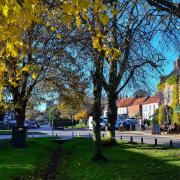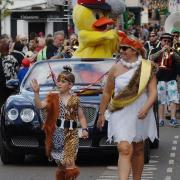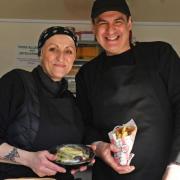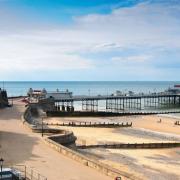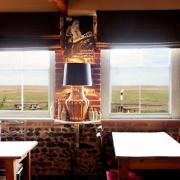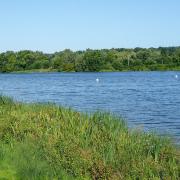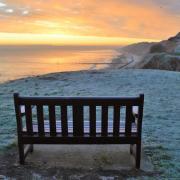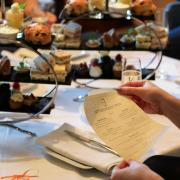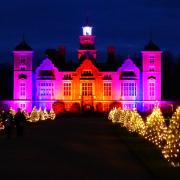Seven scintillating snippets, some of them legendary, about two seaside settlements in north east Norfolk

1. Shine a light
Happisburgh has the only independently run lighthouse in Britain. The iconic red-and-white-striped tower standing photogenically on the cliff was built after a winter storm wrecked 70 ships and drowned 600 sailors in the seas below. It originally had a little sister lighthouse, closer to the sea, which succumbed to coastal erosion in 1883. The main tower was painted red and white so that sailors could tell it apart from Winterton lighthouse. When it was deemed surplus to requirements it was saved by villagers and for the past 30 years volunteers have kept its light shining out to sea.
The first open days of 2019 are on Easter Sunday and Monday, April 21 and 22. Visitors will be able to climb the tower and marvel at a vista which, on a clear day, includes 30 churches, 10 windmills, various wind farms and the Trimingham radar installation.
__________
Read facts about Harleston, North Walsham, Hunstanton, Wymondham and Thetford.
__________

2. Miraculous Bacton
Historic Bacton has its own legends. One drew people from across the country. All that remains of Bacton’s rich Bromholm Priory are a few stark ruins in a field. But it once was famous for miraculous cures and raising people from the dead. Even today stories swirl around the site.
In 1205 the priory acquired a small wooden cross, said to have been made with wood from the cross on which Jesus died. Soon tales were being told of miraculous cures, including 39 people raised from the dead and 19 blind people having their sight restored. Pilgrims are said to have included several kings of England, and Chaucer’s Canterbury Tales mentions the ‘holy cross of Bromholme.’

3. Home of history
Happisburgh’s human history is longer than almost anywhere else’s history. Flint tools found here were used more than 800,000 years ago – the earliest evidence of humans ever found in northern Europe. The flint tools unearthed in Happisburgh immediately pushed British human history back another 100,000 years. Other finds revealed our early human ancestors shared their Happisburgh home with mammoths, rhinos, hyenas, and sabre-toothed cats. And then, as if this was not enough earth-shattering history, six years ago ancient footprints were discovered on the beach and dated to around 900,000 years ago, making them the oldest human footprints ever seen outside Africa.

4. Go with the flow
Happisburgh people could all be speaking in Cockney rhyming slang and climbing the apples and pears to the iconic lighthouse as, aeons ago, the forerunner of the River Thames, known as the Bytham, flowed into the sea not between Essex and Kent, but at Happisburgh.
5. Time and tide
Happisburgh is one of at least 12 places around the British coast to be chosen to host a Time and Tide bell. The bells were designed by artist Marcus Vergette to be rung by the movement of water at high tide, creating haunting, gentle music. The bell is currently in the playground of the primary school while fundraising continues to install it on the shore. Other locations include the Isle of Lewis in Scotland and the Thames in London. Happisburgh was chosen for its extraordinarily long history and the beauty of its coastline. And the name of the bells is particularly relevant here, where coastal erosion is having a devastating effect. Land is being lost much faster than was predicted even a few years ago, with the current policy of managed realignment meaning some sea defences are put in to give people time to move, but ultimately nature is allowed to take its course with cliffs crumbling and dunes inundated.
6. Neat handwriting
Famous people linked with the area include writer Arthur Conan Doyle, and the rather more niche celeb, Richard Porson, who went to the village schools in Bacton and Happisburgh in the 1760s. He was such a brilliant pupil he eventually won a scholarship to Eton, went on to Cambridge, and became an expert in ancient Greek. In fact he ruled at Greek with his rule on Greek poetry still known as Porson’s Law. And a popular Greek typeface, Porson, was based on his handwriting. Another piece of handwriting inspired Sherlock creator Arthur Conan Doyle, who stayed at Happisburgh’s Hill House Hotel in 1903. His novel The Dancing Men, written at Happisburgh, was inspired by the landlord’s son, who showed him a signature made of little dancing figures.
7. Life’s a gas in Bacton
Around a third of Britain’s gas arrives via Bacton. In the winter that can be 100 million cubic metres every day. The complex of six terminals opened in 1968. It takes in and processes gas from the North Sea, as well as receiving, or sending, gas to and from continental Europe. Undersea pipes connect Bacton to Belgium and the Netherlands, with underground pipes spreading from the Norfolk village across much of Britain. The North Sea gas comes from fields with names ranging from Gordon and Sean, through types of boats (Clipper, Galleon, Barque, and Skiff ), girl’s names beginning with D (Dawn, Dotty, Deborah, Delilah and Della), and rivers (Thames, Yare, Bure, Thurne, Wensum, Deben, Wissey and Orwell), to the Arthurian legends (Arthur, Lancelot, Galahad, Mordred, Guinevere, Excalibur, Gawain, Tristan and Camelot.)




